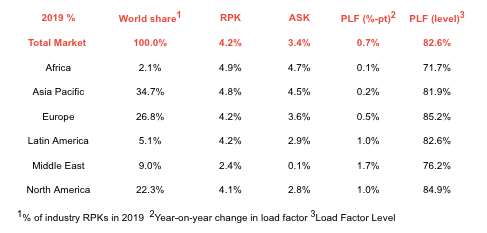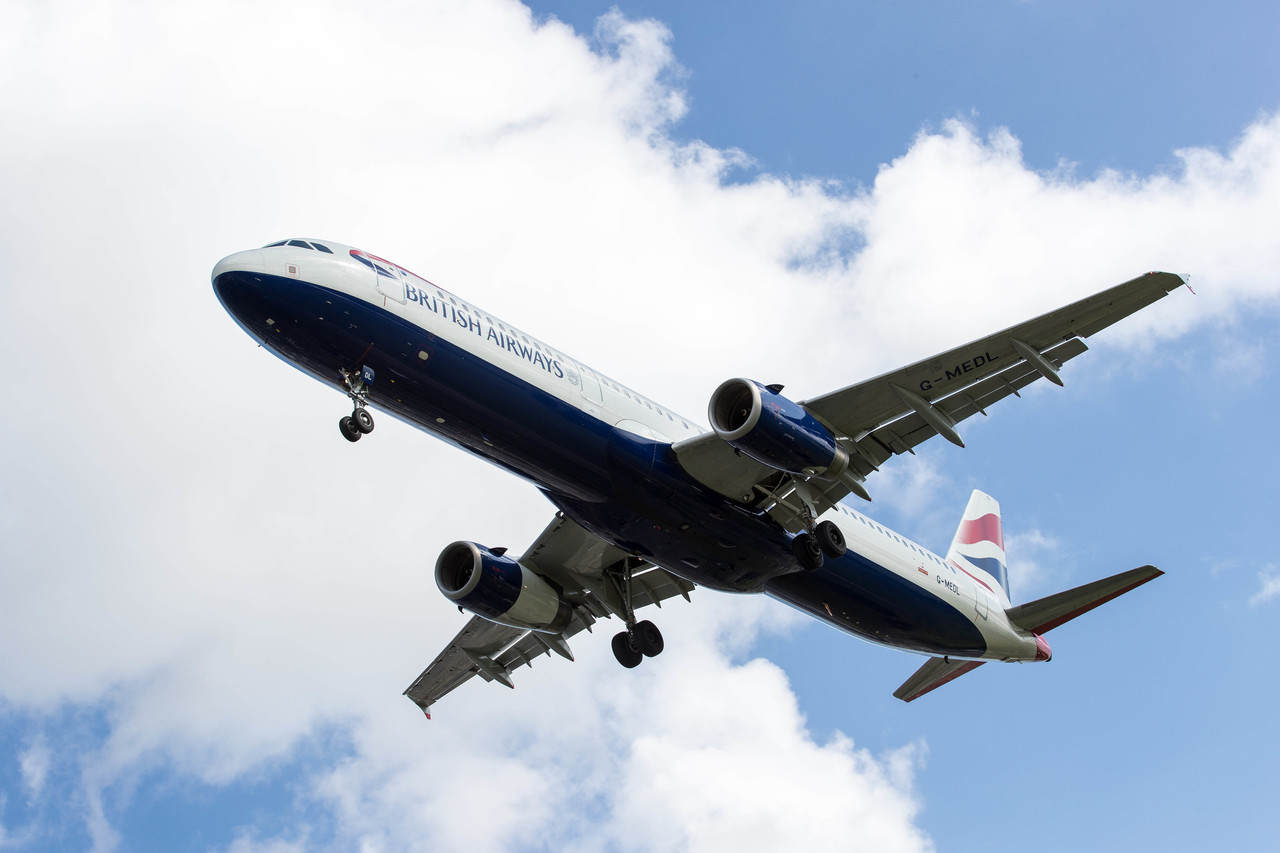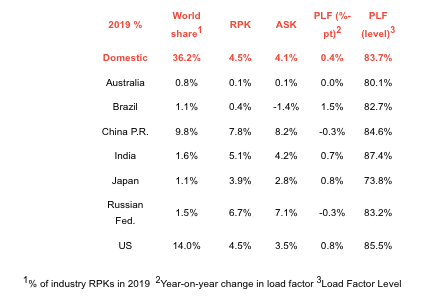INTERNATIONAL. Global airline passenger traffic rose +4.2% last year, but growth slowed, according to new figures released by the International Air Transport Association (IATA).
The full-year results for 2019 highlight a significant slowdown compared to the 2018 growth figure of +7.3%, as measured in revenue passenger kilometres (RPKs). It marked the first year since the global financial crisis in 2009 that passenger demand fell below the long-term trend of about +5.5% annual growth.
December 2019 RPKs increased +4.5% against the corresponding month of 2018, representing an improvement over the +3.3% annual growth reported in November. IATA observed that this was primarily due to solid demand in North America.

IATA Director General and CEO Alexandre de Juniac said: “Airlines did well to maintain steady growth last year in the face of a number of challenges. A softer economic backdrop, weak global trade activity and political and geopolitical tensions took their toll on demand.
“Astute capacity management, and the effects of the 737 MAX grounding, contributed to another record load factor, helping the industry to manage through weaker demand and improving environmental performance.”
According to the IATA data, international passenger traffic climbed +4.1% in 2019, compared to 2018, down from +7.1% annual growth in the previous year. Capacity grew by +3% and load factor increased by +0.8% to 82%.
Asia Pacific airlines’ full-year traffic increased +4.5%, a significant slowdown compared to +8.5% growth in 2018. IATA noted that this reflected the impact of the US-China trade war as well as weakening business confidence and economic activity.
European carriers saw a +4.4% traffic rise, a decrease from +7.5% annual growth in 2018 on the back of what IATA describes as slowing economic activity, declining business confidence, industrial disputes, Brexit uncertainty and the collapse of several airlines.

Middle Eastern airlines’ passenger demand increased +2.6%, the slowest pace of growth among all regions and down from +4.9% growth in 2018. However, demand surged in the fourth quarter and the monthly growth of +6.4% in December led all regions.
North American airlines saw traffic growth fall to +3.9%, down from +5% in 2018, amid softer US economic activity and weaker business confidence compared to 2018, IATA said.
Traffic for Latin American airlines rose +3%, a significant slowdown compared to +7.5% annual growth in 2018. IATA attributed this to social unrest and economic difficulties in a number of countries in the region.
“2019 was a difficult year for aviation and 2020 is off to a tragic and challenging beginning.” – IATA Director General and CEO Alexandre de Juniac
African airlines performed best of all regions with a +5% demand increase across 2019, down from the +6.3% growth recorded in 2018. IATA said airlines in the region benefited from a generally supportive economic backdrop last year as well as increases in air transport connectivity.
Meanwhile, domestic air passenger demand rose +4.5% in 2019, according to the IATA results. This was down from the +7.8% growth recorded in 2018 but all markets did achieve annual growth, with China and Russia leading the way.
In China, airlines saw domestic passenger traffic rise by +7.8%, but this represented the slowest pace of growth since the global financial crisis. Softer economic activity amid the US-China trade war, compounded by weaker consumer spending and unrest in Hong Kong all contributed to the slowdown, IATA observed.

According to IATA, in early 2020, any positive impacts of the ‘phase one’ trade agreement with the US are likely to be countered by the impact of the coronavirus outbreak.
Indian airlines’ four years of double-digit demand growth was halted in 2019, as traffic rose +5.1%, a fall from +18.9% in 2018. IATA said the bankruptcy of Jet Airways and weakening economic activity were the main reasons for the slowdown.
Looking ahead, De Juniac said: “2019 was a difficult year for aviation and 2020 is off to a tragic and challenging beginning. Today, headlines are also focused on the novel coronavirus. From our experience of past outbreaks, airlines have well-developed standards and best practices to keep travel safe. And airlines are assisting the World Health Organization (WHO) and public health authorities in efforts to contain the outbreak in line with the International Health Regulations.
“There currently is no advice from WHO to restrict travel or trade. But it is clear that demand has fallen on routes associated with China, and airlines are responding to this by cutting capacity for both domestic and international China. The situation is evolving fast, but we are observing significant schedules adjustments for February.”













